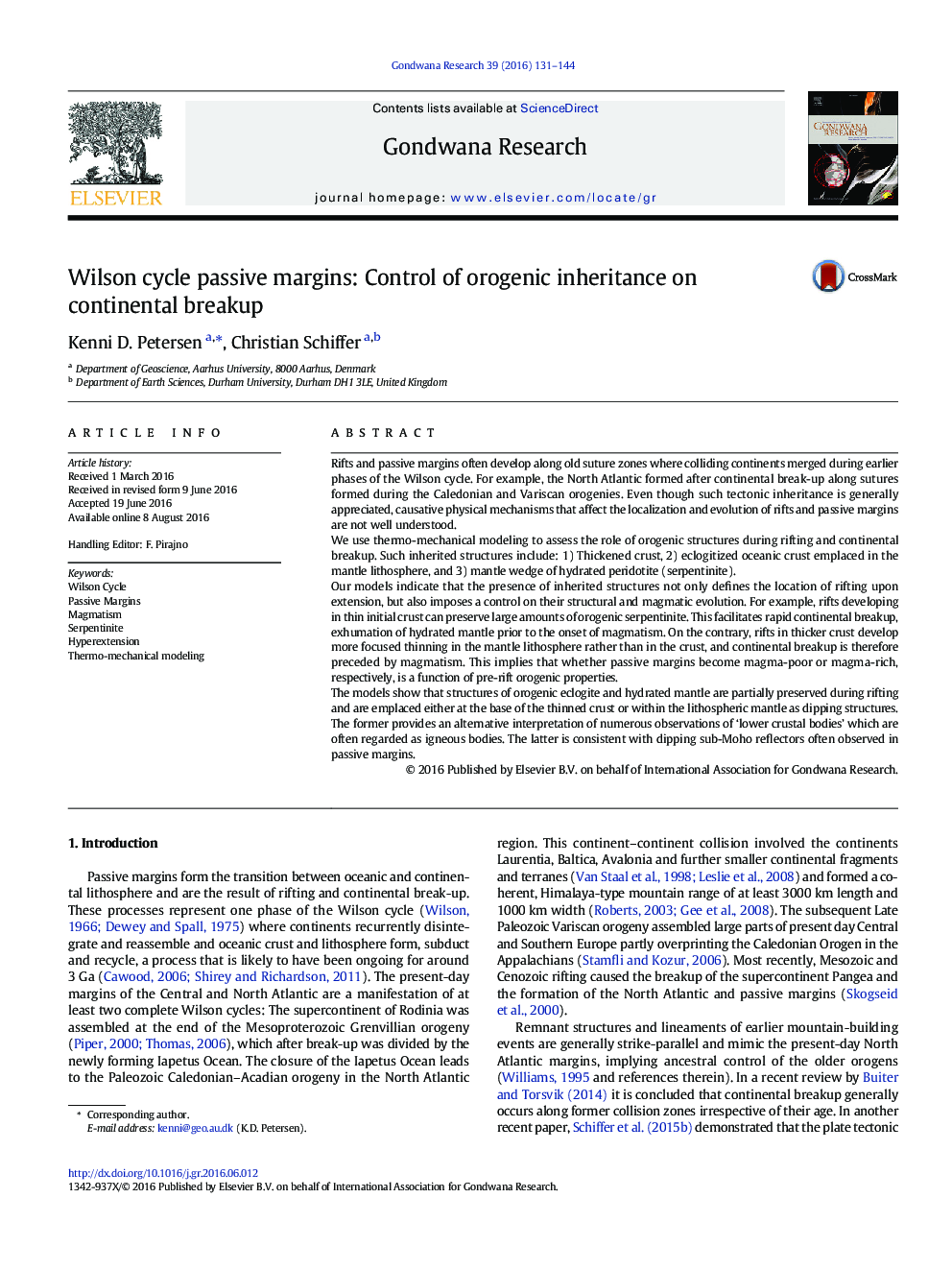| Article ID | Journal | Published Year | Pages | File Type |
|---|---|---|---|---|
| 4726566 | Gondwana Research | 2016 | 14 Pages |
•Thermo-mechanical models of rifting and breakup of orogenic lithosphere•Pre-rift crustal thickness as a control on passive margin melt productivity•Mantle exhumation due to buoyant flow of fossil mantle wedge upon extension•Inherited serpentinite rather than syn/post-rift serpentinization•Lower crustal bodies explained as preserved fossil slab or mantle wedge material
Rifts and passive margins often develop along old suture zones where colliding continents merged during earlier phases of the Wilson cycle. For example, the North Atlantic formed after continental break-up along sutures formed during the Caledonian and Variscan orogenies. Even though such tectonic inheritance is generally appreciated, causative physical mechanisms that affect the localization and evolution of rifts and passive margins are not well understood.We use thermo-mechanical modeling to assess the role of orogenic structures during rifting and continental breakup. Such inherited structures include: 1) Thickened crust, 2) eclogitized oceanic crust emplaced in the mantle lithosphere, and 3) mantle wedge of hydrated peridotite (serpentinite).Our models indicate that the presence of inherited structures not only defines the location of rifting upon extension, but also imposes a control on their structural and magmatic evolution. For example, rifts developing in thin initial crust can preserve large amounts of orogenic serpentinite. This facilitates rapid continental breakup, exhumation of hydrated mantle prior to the onset of magmatism. On the contrary, rifts in thicker crust develop more focused thinning in the mantle lithosphere rather than in the crust, and continental breakup is therefore preceded by magmatism. This implies that whether passive margins become magma-poor or magma-rich, respectively, is a function of pre-rift orogenic properties.The models show that structures of orogenic eclogite and hydrated mantle are partially preserved during rifting and are emplaced either at the base of the thinned crust or within the lithospheric mantle as dipping structures. The former provides an alternative interpretation of numerous observations of ‘lower crustal bodies’ which are often regarded as igneous bodies. The latter is consistent with dipping sub-Moho reflectors often observed in passive margins.
Graphical abstractFigure optionsDownload full-size imageDownload as PowerPoint slide
